If we pay attention to what Claudius Namaciano (a Gallo-Roman poet of the 5th century AD) tells in his work De reditu suo libri duo , the famous general Flavius Stilicho ordered the burning of the Sibylline Books to thus silence the use that opponents made of them against his government. At first it does not seem strange, since Stilicho became regent of the empire when the emperor died despite the opposition of the Praetorian prefect, Rufinus. But it is that, in addition, he tried to combat paganism in favor of official Nicene Christianity and those books were one of the last vestiges of the traditional Roman faith.
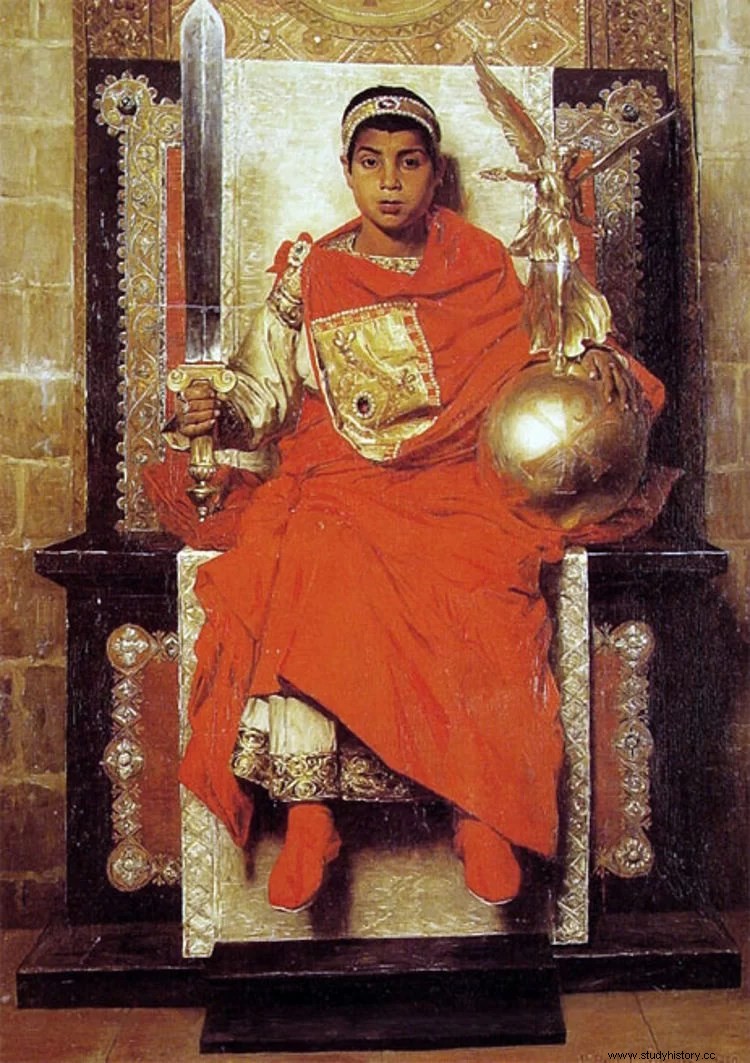
Despite being of Vandal origin, Stilicho was one of the main soldiers of Theodosius I (he was even married to his niece), to the point that when the emperor died he received the double appointment of magister militum and regent, the latter because his heir, Honorius, was only nine years old. Although in reality he had an older brother, Arcadio, who was the one who supported the aforementioned Rufino. To prevent disputes, Theodosius' testament recovered the division of the empire into two parts, so that Honorius had the western part and the other the eastern part. They never got together again.
Honorius reigned in the shadow of Stilicho, who married her daughter María de ella to strengthen the bond, as evidenced that when she died she was soon replaced by her sister Termancia de ella. That union was necessary because to the external danger, in the form of barbarian invasions, was added an internal one, that of attempted coups or rebellions. Up to nine insurrections were recorded, declaring himself emperor several generals such as Marco, Graciano and Constantino III. Stilicho was able to get around them while placating the barbarians by negotiating thanks to his own Germanic origin, since he did not have enough strength to face them.
Unfortunately, this was a double-edged sword and, duly incited by opponents, it made criticism against him intensify regardless of the fact that he managed to repel the invasion of the Visigoths of Alaric between the years 401-405 AD, as well as the later one of the Ostrogoth Radagaiso between 405-406 AD. (formed by a coalition of Goths, Vandals, Sueves, Burgundians and Alans). The fact that he himself was not a Roman by birth was cause for rejection and he was accused of 'enriching and agitating the barbarians', in a context of xenophobic legislation and riots.
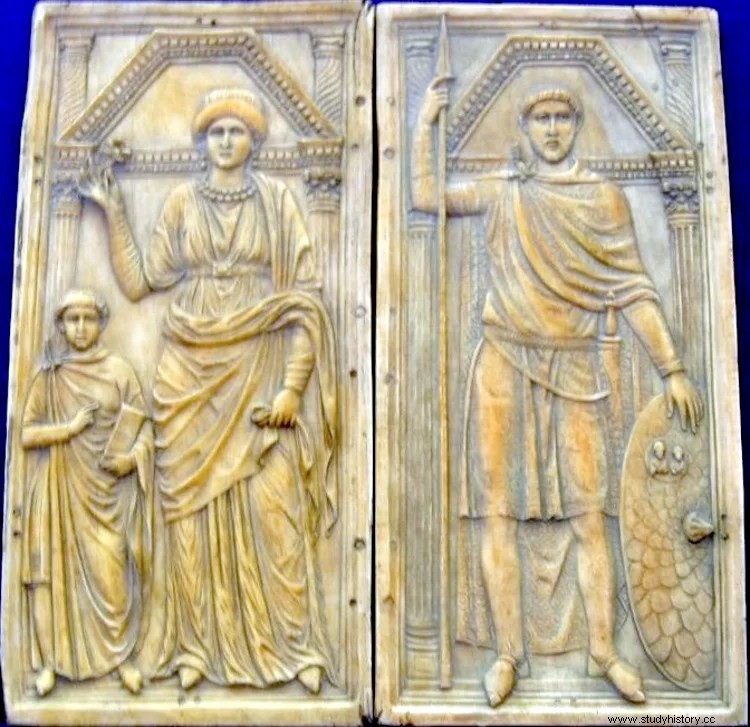
All this made him very unpopular, aggravated by the fact that he was rumored to be an Arian. It does not seem likely and if there were not enough evidence that his own wife, Flavia Serena, was a fervent Nicene Christian enemy of heresies, the religious policy that she applied should be enough to disprove it, always in defense of the official branch:Augustine of Hippo (Saint Augustine ) convinced him to pursue Donatism and the ludi gladiatorii were even banned (gladiatorial combats) for considering them a spectacle incompatible with the doctrine of Christ.
However, Stilicho had a less extreme personal conception of faith than most and, within the line of proscriptions he decreed, he followed a certain laxity:for example, he refused to tear down pagan temples to maintain the classical image of Roman cities. , showed an unusual respect for the Senate at the time (there were many senators clinging to the old religion) and he even had non-Christian collaborators, such as his disciple Claudiano, a Greco-Egyptian poet whose specialty was writing panegyrics of his teacher and who refused to embrace the new beliefs.
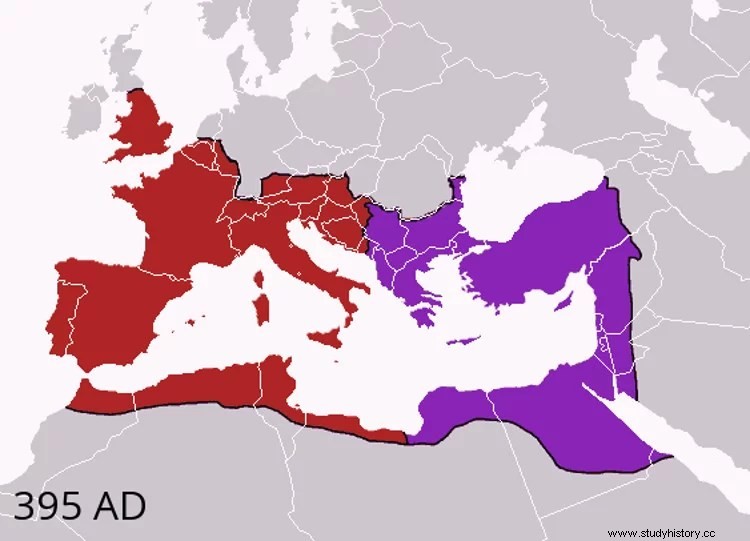
The destruction of the Sibylline Books (not to be confused with the Sibylline Oracles , much later) would thus obey the double objective of silencing the opposition and demonstrating the firmness of his beliefs, since it was said that they predicted a hypothetical plan of his to take power. Furthermore, there would be a prophecy in them, dating back to the founding of Rome, according to which Romulus observed the flight of twelve vultures over the Palatine Hill, deducing that Roman power would be limited to twelve centuries. By putting an end to that oracle, Stilicho would try to make people forget that this period was about to end, and with it Rome itself.
This is assuming that what Rutilio Claudio Namaciano tells is true, who, after all, lived at the same time and was also a character of a certain lineage:son of a prefect of Rome, he himself came to occupy that position and that of magister officiorum (a kind of secretary of state) in the year 414 AD. What happens is that Namaciano remained faithful to the old religion and above all he was part of the group of critics with the policy of alliances with the barbarians.
In other words, he was one of those opponents who faced Stilicho, so it is not surprising that in the aforementioned poem De Reditu Suo , a vision of Rome's glorious past (the title itself means "On His Return") told in the form of a journey through Gaul in a melancholy but hopeful tone, not only included scathing satires of Christianity accusing it of decline (which made Saint Augustine rebutted it in his Civitate Dei ) but also held the hated regent responsible for the burning of the Sibylline Books .
And what were the Sibylline Books ? It was a collection of mythological, prophetic texts that the Romans consulted as a possible guide to know how to act each time they went through a momentous historical event. In fact, its name derived from the sibyls or prophetesses, for the Greeks those women who, inspired by Apollo, had the gift of clairvoyance. More specifically, the Cuman sibyl (although other versions speak of the Hellespontine and Eritrean sibyls), which was considered the most important of the ten known. Cumae was a city in Magna Graecia (in what is now the Campania region of southern Italy),
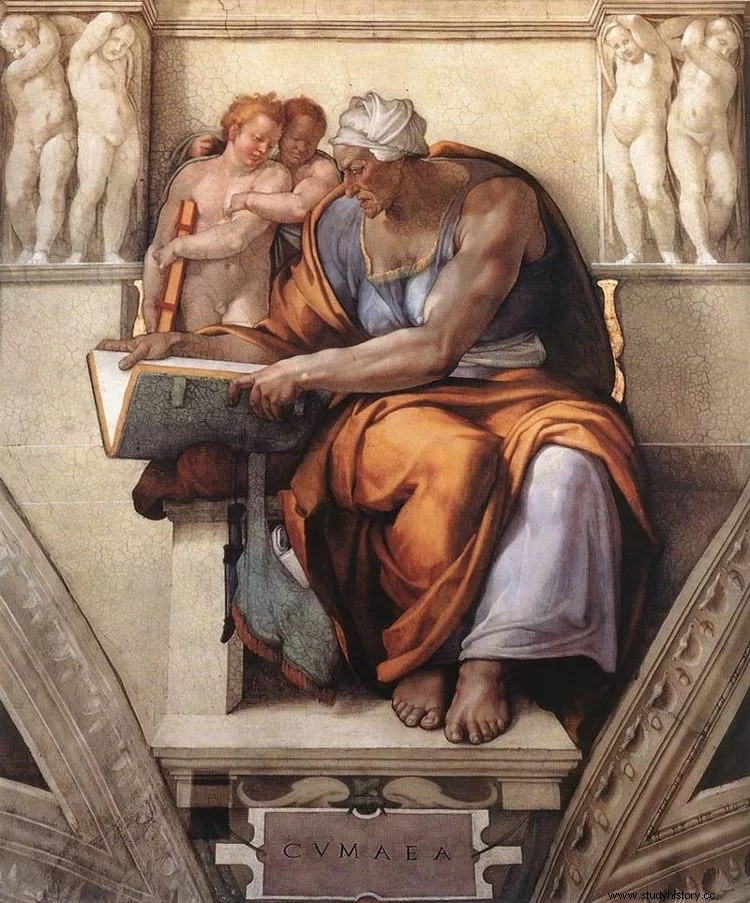
Considered the daughter of a human and a nymph, Virgil takes her out in the Aeneid guiding Aeneas through Hades and, according to another myth, Apollo agreed to grant her wish:to live as many years as grains of sand he had held in her fist; only she did it literally, without taking into account also giving him her eternal youth, so that she became almost a millennium so old that they had to put her in a cage hanging from the temple of the god. But the episode that most directly concerns us is the one that relates her to Tarquinio the Proud , last king of Rome.
The monarch refused to buy the nine books of prophecies that she offered him, a compilation of oracles made in the sixth century BC, considering them too expensive. The sibyl destroyed three and asked the same price for the other six; obviously, he said no again and then three others were burned. Fearing that there would be none left, Tarquin agreed to buy the rest but had to pay the initial amount. Those were the ones that were kept in the temple of Capitoline Jupiter and that were incorporated into the Roman religion as an important sacred element, as testified by authors such as Marco Terencio Varrón (cited by Lactantius in Institutiones divinae ) or Aulus Gellius (in his Noctes atticae ) .
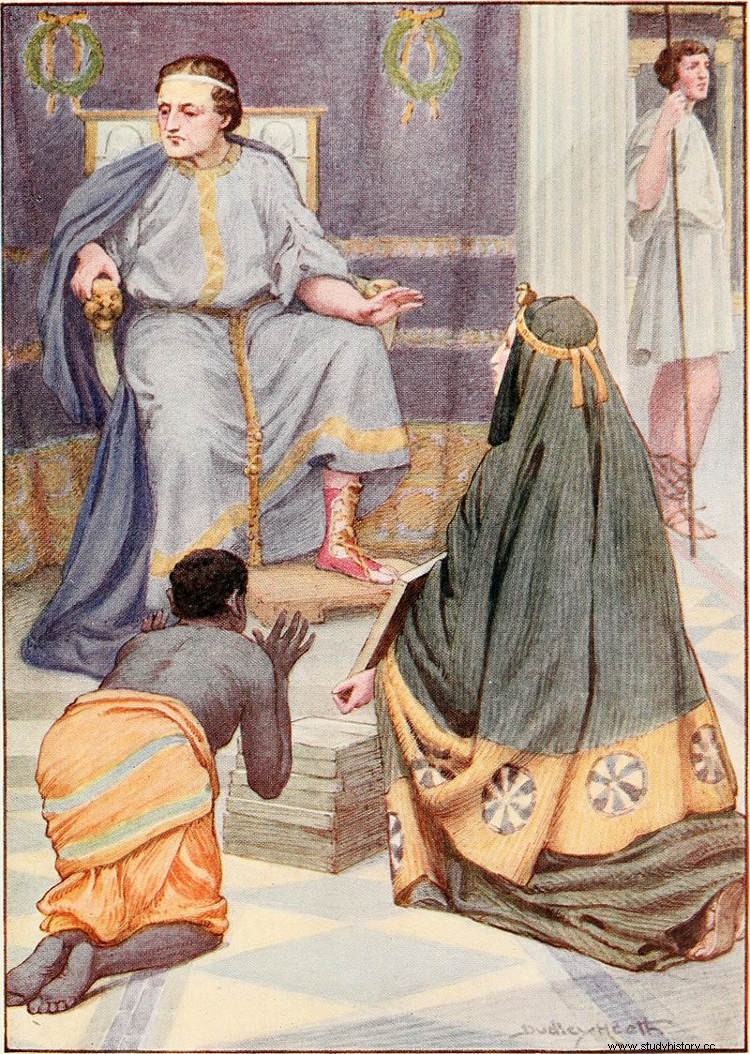
The Proud reigned between 534 and 509 BC, so the Sibylline Books they were part of most of the history of Rome. It would be necessary to make a nuance, yes:from the year 83 B.C. they were no longer the originals, since they were consumed by the fire that devoured the building and the Senate had to send delegates to various cities to make a new compilation from copies. They were deposited in the new rebuilt temple but in 12 B.C. Augustus had them transferred to another, that of Apollo Patroos that was on the Palatine.
He could do it because, in addition to emperor, he had the position of pontifex maximus or high priest of the college of pontiffs. In this regard, it should be said that the collegium pontificum , an institution that brought together all the priests of the Roman religion, was also made up of six other colleges. Of these, there were three majors, above the rest in importance (along with the pontifex maximus , evidently):that of the vestals (represented by the Virgo Vestalis Maxima ), that of the Rex Sacrorum (high priest of the patricians) and that of the flamines (the most prestigious priests). Two others were the augurs (fortune tellers) and the epulones or septenvirs (the seven in charge of organizing parties and games).
One would be missing that is of particular interest to us here, that of quindecimviri sacris faciundis . The quindecemvirs, as their name indicates, were fifteen men with two main tasks. One consisted of supervising, and approving where appropriate, the establishment of the cult of new gods, since in the field of belief Rome was quite open. The other was to guard the Sibylline Books . At first there were not fifteen members but two (duumvirs) and both had to be patricians, but in the middle of the 4th century BC, due to the Licinius-Sextias laws promoted by the tribunes of the plebs, their number was increased and it was established that half they were commoners.
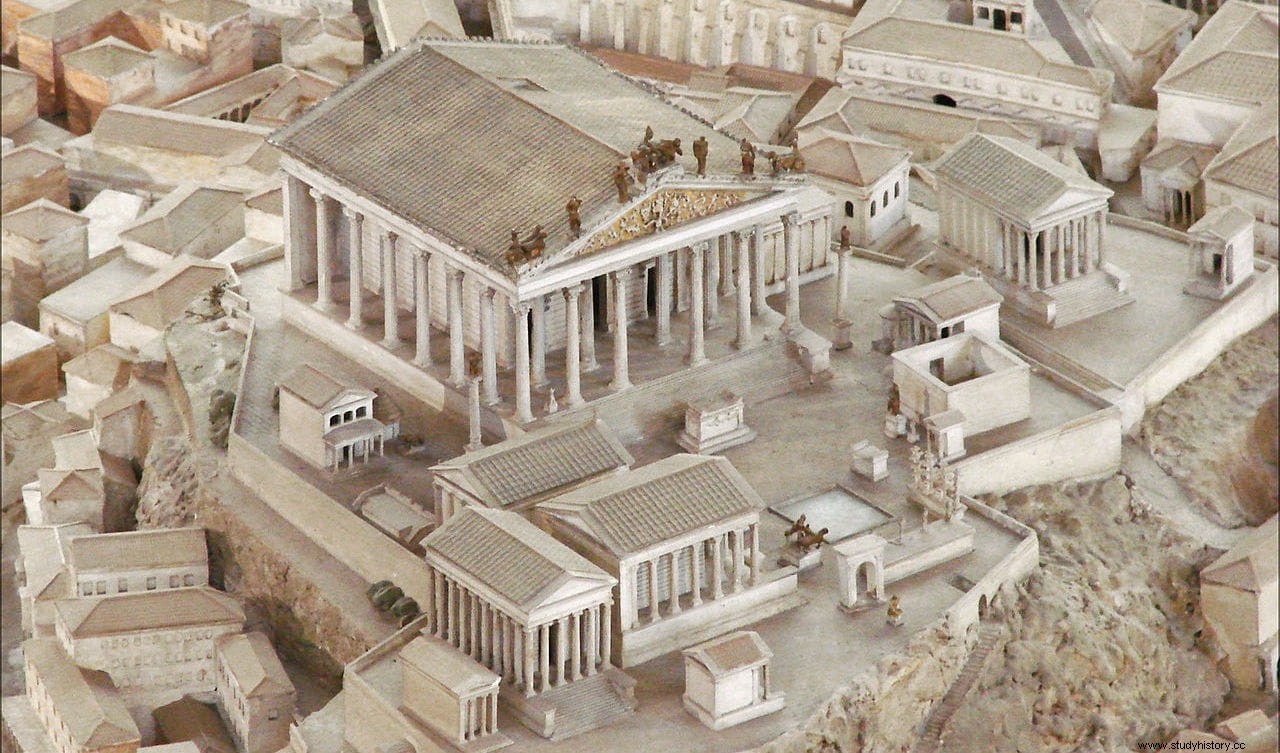
Subsequently, the quindecemvirs began to join by resorting to co-optation (covering vacancies through the votes of the rest) and, already in the 3rd century BC, the tribunate elections (assembly of citizens gathered by tribes) were in charge of their election.
In any case, they had the mission of keeping the Sibylline Books and open them publicly when the Senate ordered it, which, as we said, used to happen in special, difficult or confusing situations, to see if there was any prophecy written about it and, with it, a possible solution.
Roman historians reported some:the plague epidemic of 399 B.C. that originated the institution of the lectisternium (a votive banquet organized by the quindecemvirs until the college of epulones was created); Hannibal's threat after his victory at Cannae in 216 B.C. (which they wanted to solve by burying two Greeks and two Romans alive); the Second Punic War itself, which followed, between 205-204 BC. C. (which involved the importation of a statue of Cibeles from Pergamon, in addition to making another lectisterium and a festival called Megalesia, with theater, chariot races and exaltation of the aforementioned Cibeles); the famous fire of Rome in the time of Nero (64 AD); etc.
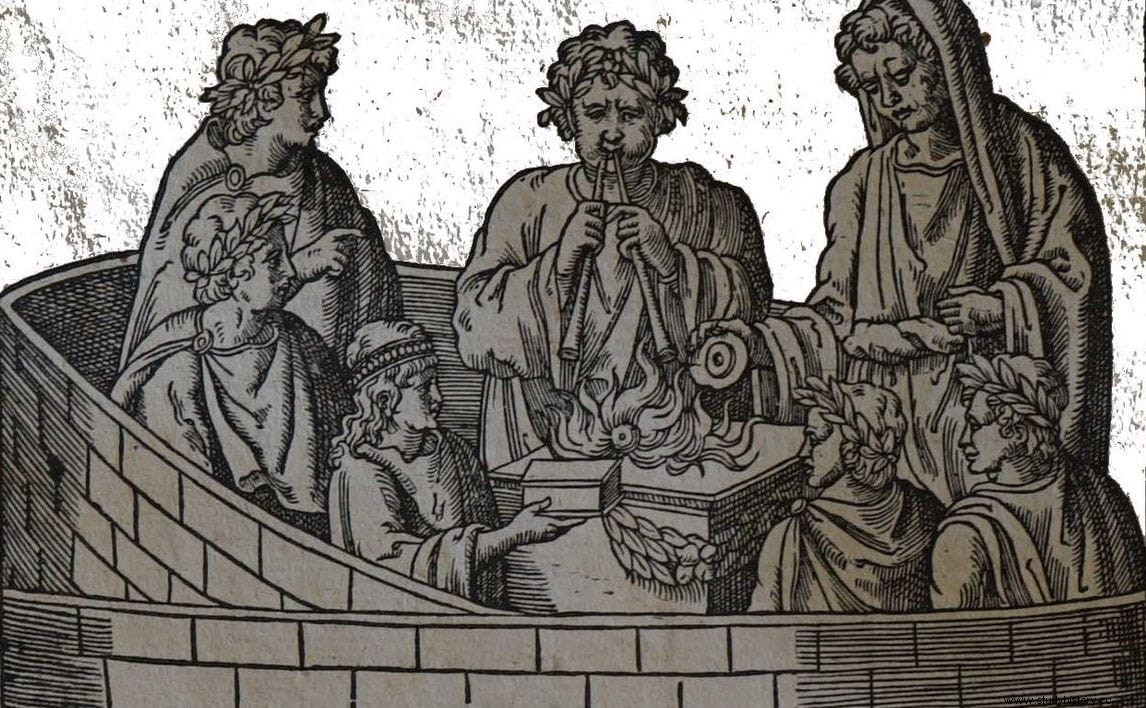
However, consulting the books was something left to the discretion of the authorities, the Senate during the republic, the emperor later. Tiberius, for example, refused to do so when the Tiber burst its banks and flooded Rome in AD 15. arguing that things related to the divine should remain secret. In any case, the consultation was not always satisfactory:Maxentius resorted to them in 312 AD, before facing Constantine in the battle of the Milvian Bridge, and they did not help him at all.
The importance of the Sibylline Books It also lies in the fact that they constitute clear proof of the growing influence that the Greek religion was exerting on the Roman religion, until its adoption based on -or largely inspired by- the Etruscan religion. It was not without an ironic part, since, as we saw before, they were quite related to Cibeles, a goddess of Phrygian origin; It is clear that the sibyl herself, despite living in Cumae, was born in Eritras, an Ionian city (on the western coast of what is now Turkey, a country where Phrygia was also located). In fact, the books were written in Greek hexameters and required a translator to read them.
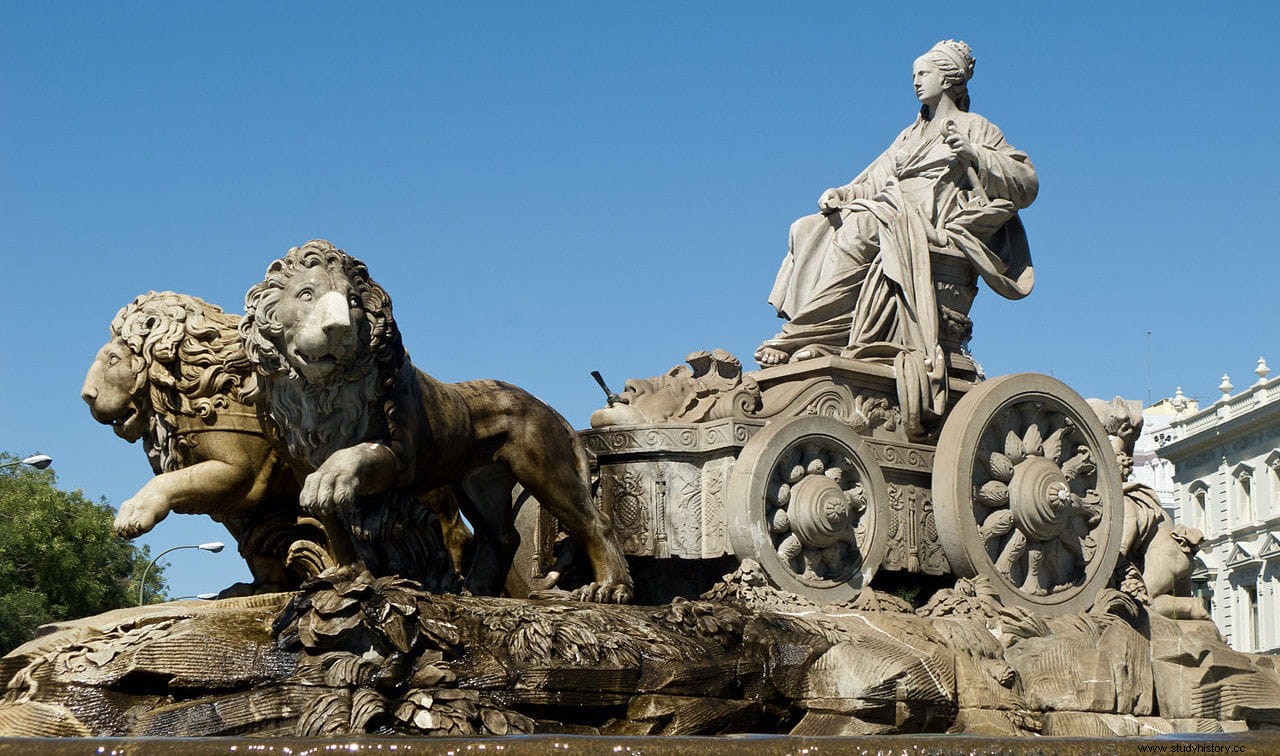
According to Cicero, who had access to them, the initials of the verses formed acrostics, something that Saint Augustine corroborates although probably twisting his interpretation:he assures that one of those acrostics gave the unlikely expression Jesus Christ son of God, savior .
It is impossible to know because we have already seen that the books did not survive, unless it is true that some seventy hexameters of the Memorabilia or Book of Wonders, by the Hellenic historian Phlegon of Trailes (who lived in the 2nd century AD), correspond to original oracles; there is no unanimity on this.
The truth is that, if that dire prophecy about the vision of Romulus really existed, the Sibylline Books they got the basics right; at least according to traditional historiography (today very nuanced):in 476 AD, that is, before the end of the century, the fall of the Western Roman Empire took place when the Herulian leader Odoacer deposed and replaced the last emperor, Romulus Augustulus .
